Gaudí’s 6 Houses in Barcelona: a journey into the world of a genius
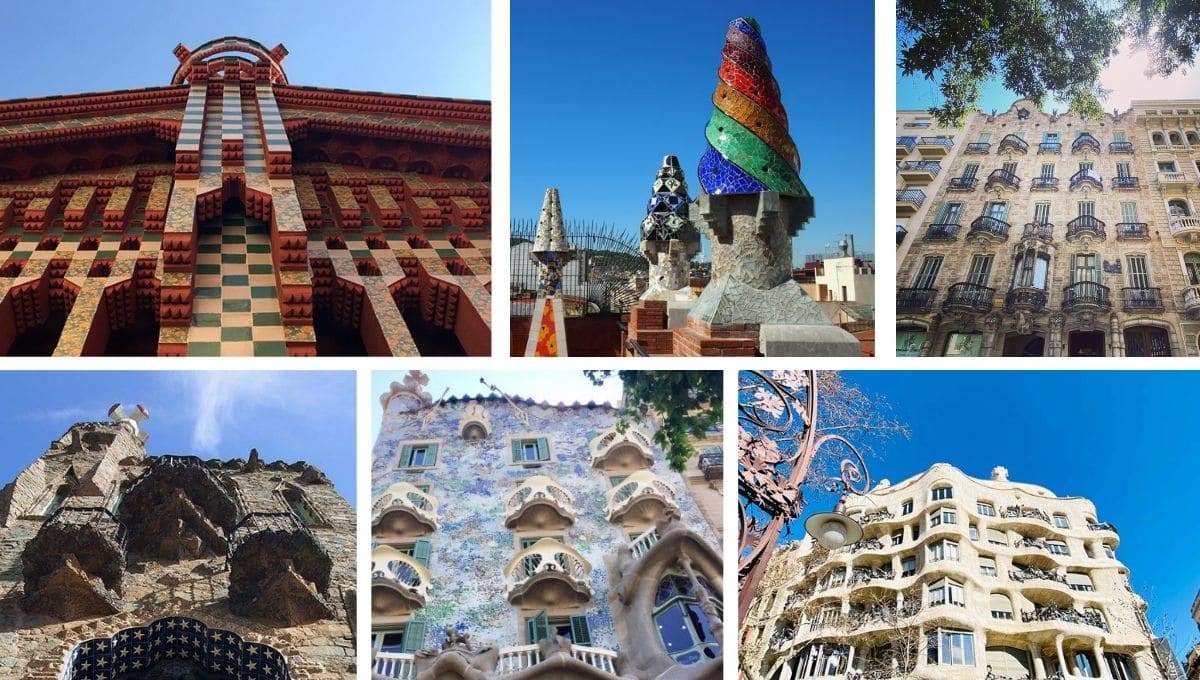
Antoni Gaudí is an architectural genius, no one doubts it. When entering the Sagrada Família for the first time, who was not stunned by the light and beauty? And who hasn’t felt the incredibly positive energy that emanates from the alleys and monuments of Park Güell?
These two places are the two most famous masterpieces of the Catalan capital. But did you know that Gaudi also built numerous houses in Barcelona? These imposing buildings were usually commissioned by Catalan businessmen who called on Gaudi’s talent to design extraordinary residences for themselves and their families.
- 1 6 Gaudí Houses in Barcelona: All different, all interesting!
- 2 Casa Milà or Pedrera: A sinuous and grandiose house
- 3 Casa Batlló: Straight out of a fairy tale
- 4 Torre Bellesguard: A small manor house full of history
- 5 Casa Calvet: Gaudí’s most classic house
- 6 Palau Güell: A palace of striking contrasts
- 7 Casa Vicens: Gaudí’s first masterpiece
6 Gaudí Houses in Barcelona: All different, all interesting!
Let’s discover the 6 houses that Gaudí built in Barcelona. It is possible to visit all of them except Casa Calvet, where you can only admire the façade from the street.
They all have their own style, but in each one, we find Gaudí’s main source of inspiration: nature. Gaudí soon abandoned straight lines and adopted the organic forms of the sea, trees, flowers, and nature in all its splendour.
In order to better appreciate the artistic evolution of this genius architect, we have classified these 6 houses from the most recent to the oldest. Over the decades, Gaudí has given free rein to his legendary creativity and his masterpieces have become more and more magical.
The first houses discussed in this article are therefore the most astonishing and artistically accomplished.
Casa Milà or Pedrera: A sinuous and grandiose house
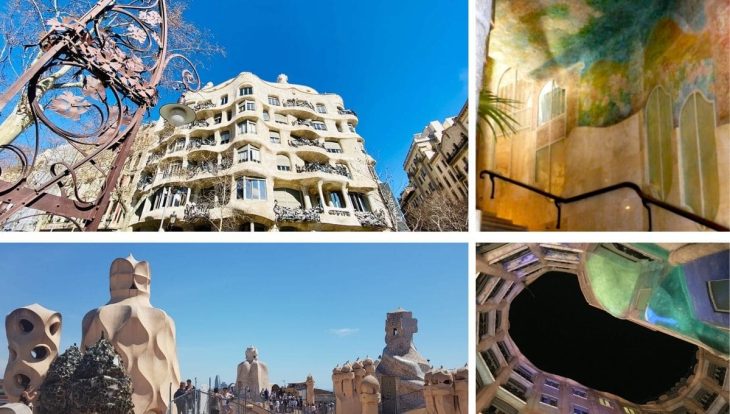
One of Gaudí’s greatest masterpieces on the Passeig de Gràcia, the Casa Milà or Pedrera was built between 1906 and 1912 and opened to the public 84 years later, in 1996.
Don’t miss the opportunity to visit it. You will have the chance to admire its impressive undulating façade, its spectacular terrace with amazing chimneys, and its 4th floor apartment decorated with Art Nouveau furniture, typical of Gaudí’s time.
La Pedrera is open from 9am to 6.30pm Monday to Sunday (including public holidays). If you book your ticket online, you will save 3€ and avoid queuing!
- We advise you to visit La Pedrera at the beginning of your stay. The Gaudí section is rich and informative about the architect’s work, allowing you to discover his other masterpieces with a more informed eye.
Casa Batlló: Straight out of a fairy tale
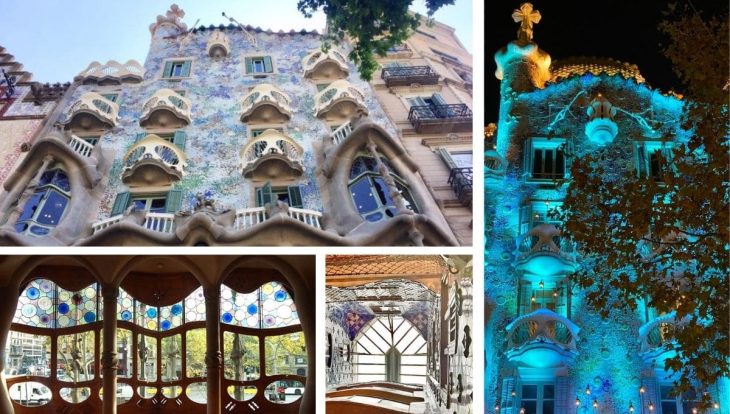
If you want to discover another of Gaudi’s works of art with a unique interior and spectacular façade, Casa Batlló must be included in your visit. This dreamlike house is a true gem of creativity. You’ll love it!
It was designed by Gaudi between 1904 and 1906 for the Batlló family. Rich in symbols, this house is a true ode to the marine world.
Intriguing and fascinating, Casa Batlló is located in the middle of Passeig de Gràcia, one of Barcelona’s main avenues, just a few minutes from Casa Milà.
- Open to the public since 2002, you can visit it from Monday to Thursday from 9am to 6.30pm and from Friday to Sunday from 9am to 8pm. In addition to avoiding the queue at the entrance, you’ll save €4 if you book your ticket online!
Torre Bellesguard: A small manor house full of history
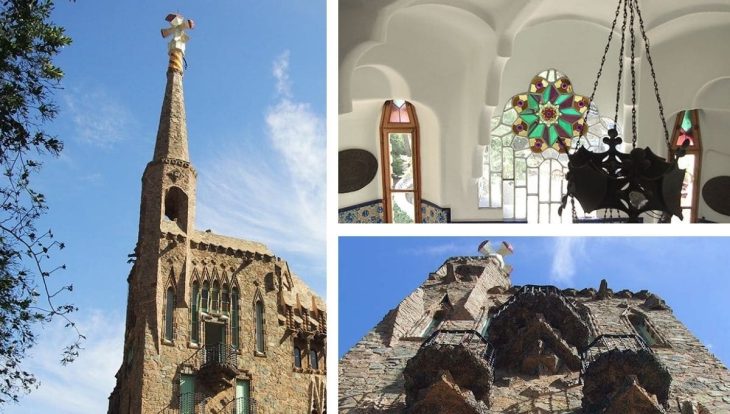
If you want to step off the beaten track and discover a house that looks like a small medieval castle, a hidden architectural treasure far less famous than the other masterpieces of its architect, don’t hesitate to head to the Torre Bellesguard, in the heights of Barcelona.
This house, built between 1900 and 1909, is still inhabited by a Barcelona family who allowed a part of their home to be visited.
If you are interested in history and architecture and like to take the side streets, don’t hesitate to go and discover it!
Casa Calvet: Gaudí’s most classic house
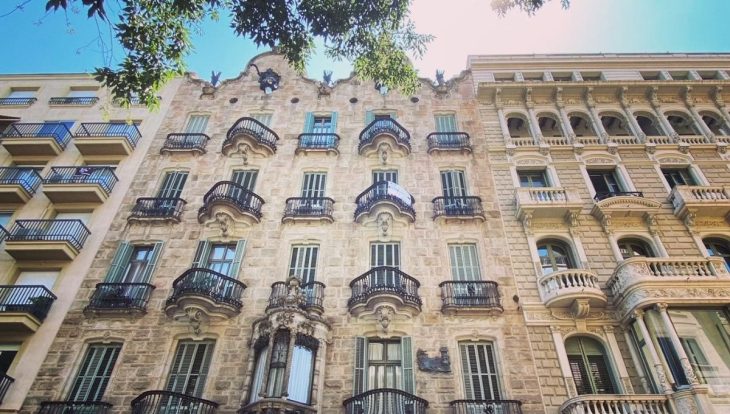
Casa Calvet (in the centre of the photo above) is a building in the Eixample designed by Gaudí between 1898 and 1900.
It is not possible to visit it, so all you can do is admire the façade of this building, which is much more modest than Gaudí’s other works. That said, the undulating shape of its balconies is reminiscent of those of the Casa Batlló, which are much wilder and original.
The ground floor has housed a Chinese restaurant for some years now. This Gaudí house is located at 48 Carrer Casp, very close to Plaça Catalunya.
Palau Güell: A palace of striking contrasts
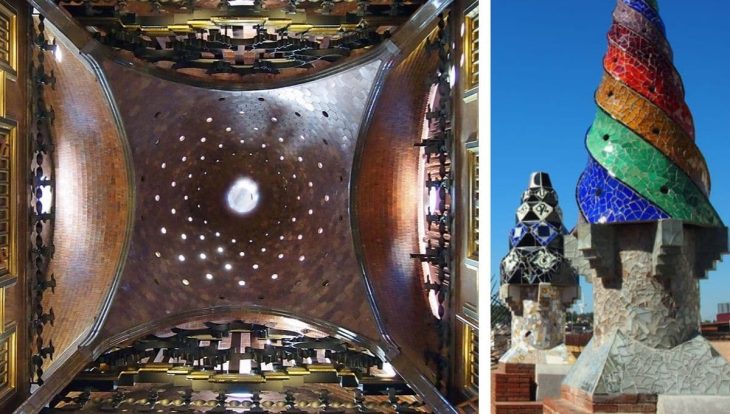
If you’re going to stroll along the Ramblas and want to discover another facet of Gaudí’s talent, be sure to visit the Palau Güell! This superb mansion designed by Gaudí was built between 1886 and 1891 for Eusebi Güell, a close friend of the Catalan architect who was also responsible for Park Guëll and played an essential role in Gaudí’s life. Without Eusebi Güell, Gaudí would never have been able to create all his masterpieces.
Although the façade of the Palau Güell is rather sober, the interior is impressive and contains many typical elements of Gaudí’s architecture.
It is possible to visit this building by buying a ticket online on the official website of Palau Güell or at its ticket office. Do not decide to do it on a rainy day, as you won’t be able to access its terrace decorated with colourful chimneys.
You may want to take part in a more complete activity including a guided tour of the Palau Güell (in Spanish and English), the Ramblas, Barcelona’s most famous market, and a tapas tasting. In this case, click on the link below.
Casa Vicens: Gaudí’s first masterpiece

Less well known than Casa Batlló or La Pedrera, Casa Vicens is the first masterpiece designed by Gaudí in 1883 when he was only 31 years old!
The young architect was inspired by nature and oriental art and worked with prestigious craftsmen to design this magnificent house in the heart of the Gràcia district.
After being inhabited for a long time and often remodelled, it was beautifully restored and opened to the public for the first time in 2017.
You can visit Casa Vicens all year round (except 25 December, 6 January, and 10-18 January) and you’ll save €2 by buying your ticket online.
So, which of these wonders do you prefer?





